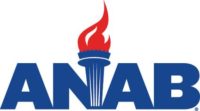CHICAGO- To prepare to build the newest version of the Ford Explorer,Ford’s Chicago plant underwent a renovation of its assembly line and accompanying machinery, including the addition of new tools, updated workstations and comprehensive training for new and existing employees.
Ford invested nearly $400 million in its Chicago manufacturing facilities to launch production of the Explorer and add a second labor shift, bringing 1,200 new jobs to the Chicago region.
The Torrence Avenue plant has been extensively renovated to accommodate production of the new Explorer, and all employees have prepared for its launch by participating in extensive training programs.
The next-generation Explorer is built at Chicago plant on a flexible assembly line alongside the Ford Taurus and Lincoln MKS sedans. Ford's $400 million investment includes approximately $180 million in manufacturing investments at the Chicago Assembly and nearby Chicago stamping plant and about $220 million for launch and engineering costs. Ford also added 1,200 new jobs to staff a second production shift at Chicago Assembly and increase production at Chicago Stamping.
The company's investment at Chicago Assembly allowed for renovations to accommodate the all-new Explorer, which is wider and taller than the outgoing model. This meant Ford had to rework everything from vehicle carriers to the overhead clamshells that carry unfinished vehicles from one part of the line to another. Twenty new pieces of equipment, 175 electric tools and more than 70 rearranged workstations rounded out the enhancements.
Additionally, a "rough road" test track was revamped, featuring seven surfaces designed to help employees identify any squeaks and rattles on vehicles before they leave the plant.
An updated error-proofing system also was incorporated that will benefit all the products built at Chicago plant. The system uses technology to assist operators at various workstations in confirming proper vehicle assembly. A device resembling a key fob is used to ensure the plant's electrical tools have applied the proper amount of torque during assembly. If any equipment does not receive the proper torque, the line will stop. With the assistance of this technology, the operator has the necessary information to make a decision about whether or not there is a concern. Any and all concerns are addressed before the vehicle is permitted to move to the next assembly station.
"In addition to all of the physical upgrades we've made at the plant to prepare for this important launch, we've taken work force training to a new level," Tetreault said. "We trained the work force with an emphasis on quality. Chicago assembly has a record of delivering vehicles with consistently high quality and excellent customer satisfaction. We are doing everything we can to make this plant the most competitive in every measure."
For Explorer, training sessions began midyear, and included both classroom and hands-on learning for new and existing employees. New workers were trained on "static" vehicles, before being paired with an operator to ensure they were qualified to work on their own. A staggered shift also helped integrate new employees, and ensured the same level of quality on both shifts.
Additionally, a standardization process adopted from Ford's Hermosillo (Mexico) stamping and assembly plant assured that operators aren't considered certified until they have worked on 400 units consecutively without error. All workers had to achieve this milestone before they could work alone on the line.
Ford's Chicago Plant Readies for New Explorer Production With Training, Renovations
Looking for a reprint of this article?
From high-res PDFs to custom plaques, order your copy today!




